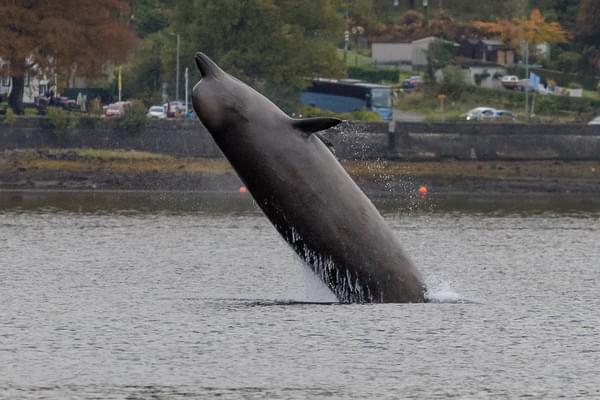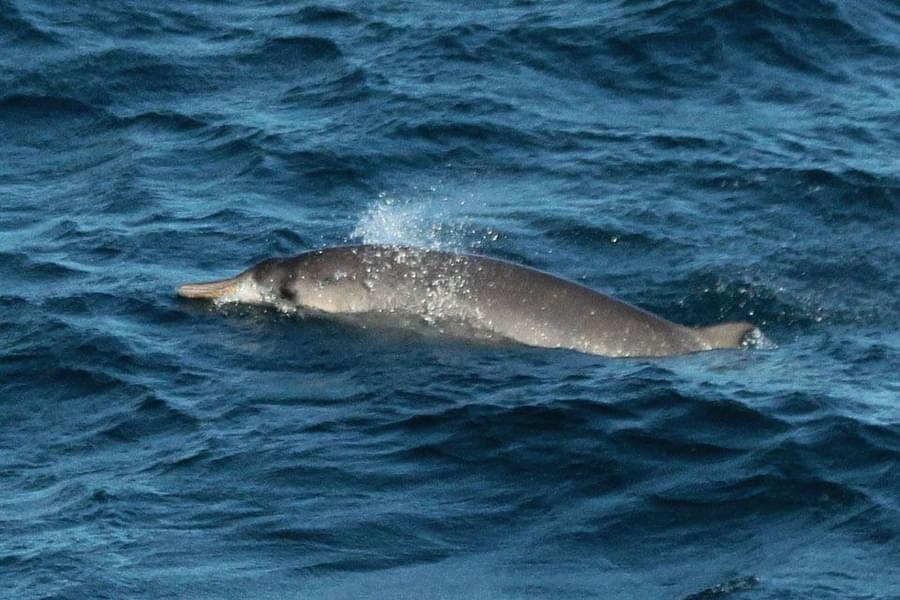Some of the world’s most mysterious and enigmatic whales have been in the news again this last week.
Over just ten days and in five different areas of the North Sea, English Channel and on western Ireland, nine beaked whales stranded in five separate incidents. Given the rarity of even seeing these animals in their natural environment, these closely grouped strandings are highly unusual. But were these events triggered by a single event or something longer term?
The first stranding was in the Netherlands on July 26, where a pair of Sowerby’s beaked whales were found beached between Heemskerk and Wijk aan Zee, north of The Hague. Although a rescue team from SOS Dolfijn was quick on the scene, the male died soon after being found and the female was subsequently euthanised.
The following evening, on Kilcummin back strand in North Mayo on Ireland’s west coast, a pair of True’s beaked whales (a mother and calf) were seen swimming rapidly into shallow waters just before peak high tide and then beached themselves on the shore. According to the Irish Independent, the calf was able to swim away but the mother died soon afterwards.
On the same weekend on Papa Westray, one of Orkney’s most northernmost islands, three male northern bottlenose whales, also a species of beaked whale, were found dead. A post-mortem was carried out quickly and found that the animals were healthy but had not been feeding recently. Speaking to The Guardian, Professor Brownlow from the Scottish Marine Stranding Scheme, who undertook the post-mortem, said: “We found extensive liver pathology in the bottlenoses, possibly consistent with acute starvation.” He added that there may have been “anthropogenic noise disturbance”.
Evidence for this disturbance can be short-lived and is one reason why post-mortems have to be undertaken quickly. Evidence of any sonic disturbance that may have led to the whales’ stranding can be detected from tiny hair cells in their inner ear, which can be scarred by sonic events. But once the hairs begin to degrade, the evidence is lost.
Following this series of strandings, a further beaked whale stranded in the English Channel on the French coastline and finally on August 6, yet another Sowerby’s beaked whale was stranded on the Norfolk coast near Snettisham. Both whales died at the scene.
Beaked whales are used to deep ocean waters, typically found at depths of more than 800 metres and feed off squid and deep-sea fish, and so their presence in the shallow North Sea and English Channel is troubling.
Whereas other cetaceans – whales, dolphins or porpoises – can sometimes be refloated, when beaked whales are stranded possibly 100 miles (160km) or more from their natural environment, they are already under acute stress. “They will not survive any attempt at a return since the animals won’t be able to feed,” said SOS Dolfijn’s team leader.
Despite their size, which can be up to 13 metres long, beaked whales are among the least known cetaceans. Their hunt for food takes them so deep into the dark ocean depths that they rely on echolocation to navigate and find food. Sound is just as vital to them as sight is to us, and so human created noise has a profound effect on them.
Whether triggered by sonar, seismic testing, or other disturbances, these incidents underscore the urgent need for better understanding of the impacts of underwater noise pollution. In protecting beaked whales, we protect a window into one of the ocean’s most mysterious realms and a species that has spent millions of years thriving where light cannot reach, now struggling in the shallows.

The only way we can protect whales and dolphins is by understanding their distribution, and so monitoring is vital for effective conservation. Donate today to help ORCA continue to identify and study important whale hotspots around the world by visiting www.orca.org.uk/donate

